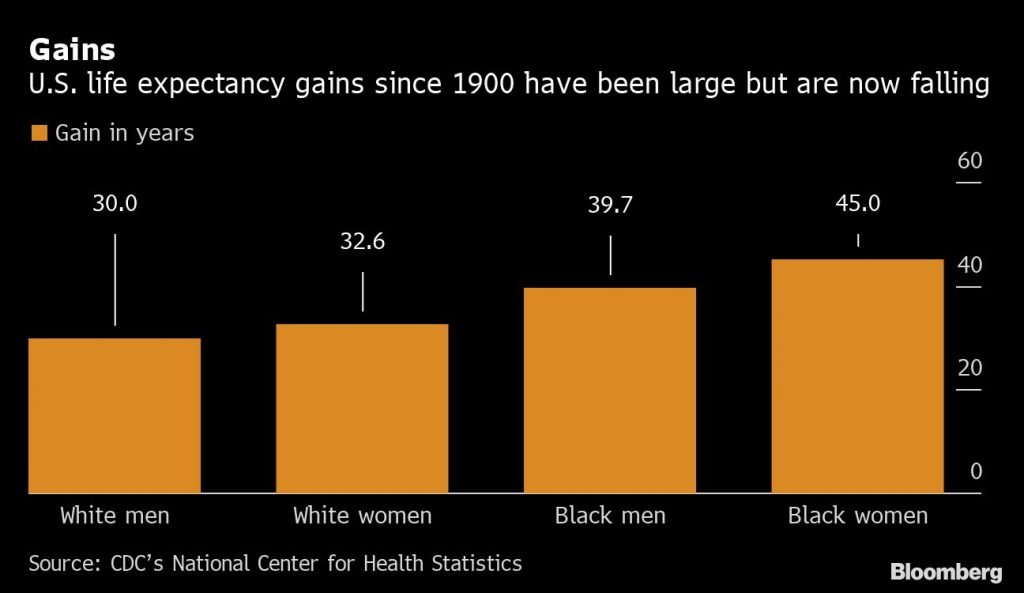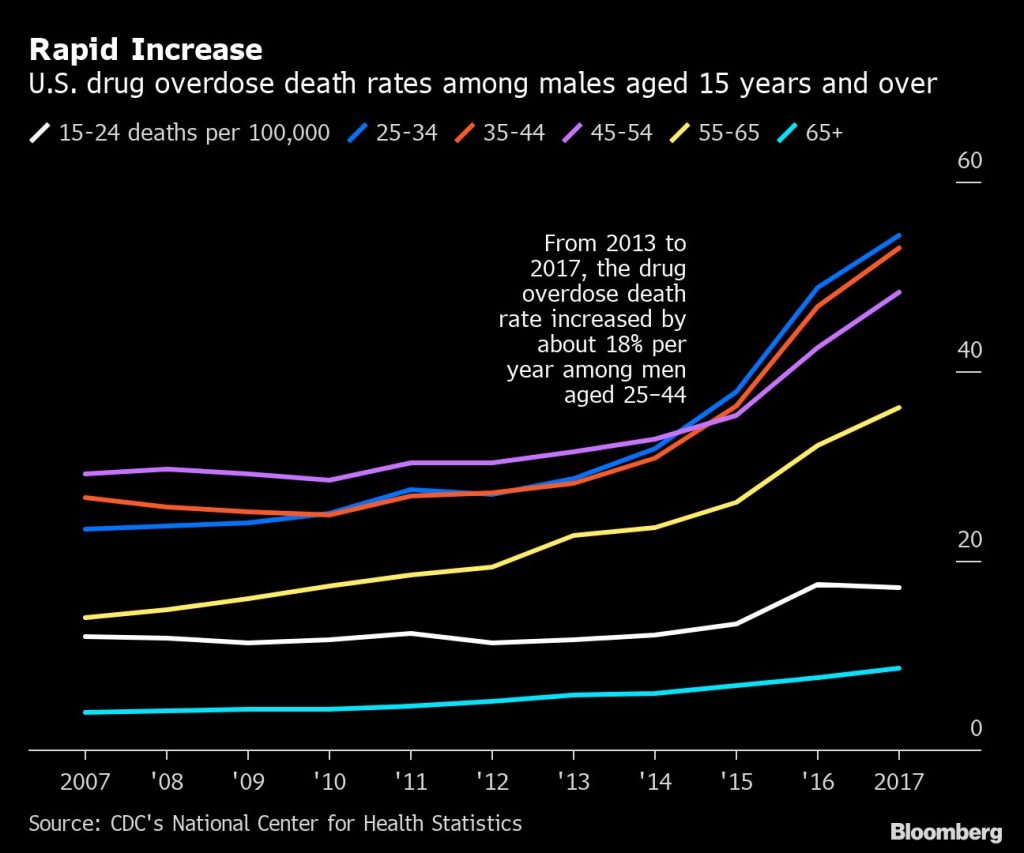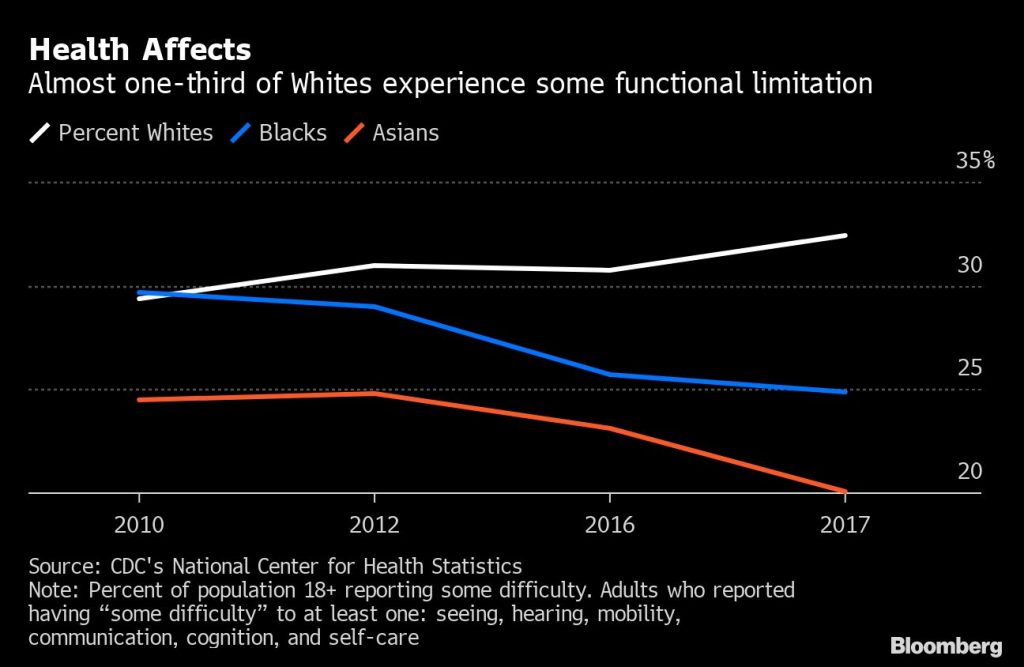 The number of adults age 65 and over struggling with poor health, which impacts families and increases pressure on health services and social care, increased from 14.7 million in 2010 to 20.4 million in 2017. (Photo: Shutterstock)
The number of adults age 65 and over struggling with poor health, which impacts families and increases pressure on health services and social care, increased from 14.7 million in 2010 to 20.4 million in 2017. (Photo: Shutterstock)
(Bloomberg)–Signs of declining health for American men abound in the National Center for Health Statistics latest annual report.
Life expectancy at birth for males declined to 76.1 years in 2017 from 76.5 in 2014, according to the data. At age 65, men are projected to live another 18.1 years compared with 20.6 years for women.
These and other takeaways from the annual report, which tracks the health of the U.S. population across different metrics, have implications for productivity, wages and the broader economy.
Related: Climate change brings catastrophic health care costs
Here are some other highlights from the report released on Oct. 30.
Life expectancy
Life expectancy has been falling across demographics in America. The estimates for whites, blacks and Hispanics fell to 78.5, 74.9 and 81.8 respectively by 2017, after having peaked in 2012 or 2014 for those groups.

The decline in life expectancy is occurring in part due to deaths from despair. From 2007 to 2017, the mortality rate from drug overdoses increased 82 percent, to 21.7 deaths from 11.9 per 100,000. Over the same 10-year period, suicide rates increased 24 percent, to 14.0 deaths from 11.3 per 100,000 resident population.
Males had twice the female drug overdose death rate in 2017 and rates for men have virtually doubled since 2007. The recent increases were especially pronounced among men aged 25–34 and 35–44, the report shows.

While drug overdose rates per 100,000 are considerably lower for females, in recent years younger age groups have seen a marked increase. The drug overdose death rate increased around 17 percent per year among females aged 15–34 years.
Suicides among Americans have also increased sharply — from 26,869 in 1980 to 47,173 in 2017. In 2017, it was the second leading cause of death, behind accidents, for young age groups — 10–14, 15–19, and 20–24 — and it reached a record high, with younger males in particular strongly impacted.
Poor health
Many Americans are suffering from poor health. About one third of adults suffer from a condition that limits functionality, which is a concern as the population ages. The number of adults age 65 and over struggling with poor health, which impacts families and increases pressure on health services and social care, increased from 14.7 million in 2010 to 20.4 million in 2017.

The use of e-cigarettes among high school students, grades nine through 12, has soared this decade to 20.8 percent in 2018 from 1.5 percent in 2011. The rate has almost doubled in the last year alone from from 11.7 percent in 2017, the data show.
Obesity
From 1999–2000 to 2015–2016, the age-adjusted prevalence of obesity among men increased from 27.4 percent to 38.1 percent. For American woman, the situation is even worse — the prevalence of obesity among them increased from 33.3 percent to 41.2 percent.
Adult obesity is correlated with higher death rates as it often is associated with increases in hypertension, high cholesterol levels, type 2 diabetes, and other health conditions which limit ones functionality such as asthma, sleep apnea, and joint problems.

Many problems associated with poor health stem from lower incomes.
Adults with low income were more likely to delay, or not receive, needed medical care due to cost. While 7.4 percent of Americans delayed or did not receive needed medical care due to the cost involved, that figure is down from 10.9 percent in 2010. On a per capita basis, Americans spent $10,739 on health expenditures in 2017.
There is some good news in the report too. Though heart disease remains the most common cause of death — death rates from heart disease and cancer have dropped by about 15 percent between 2007 to 2017. Deaths from strokes for both men and women are down 13.6 percent, mainly due to better prevention, diagnosis and treatment, according to the report.
Read more:
© 2025 ALM Global, LLC, All Rights Reserved. Request academic re-use from www.copyright.com. All other uses, submit a request to [email protected]. For more information visit Asset & Logo Licensing.







